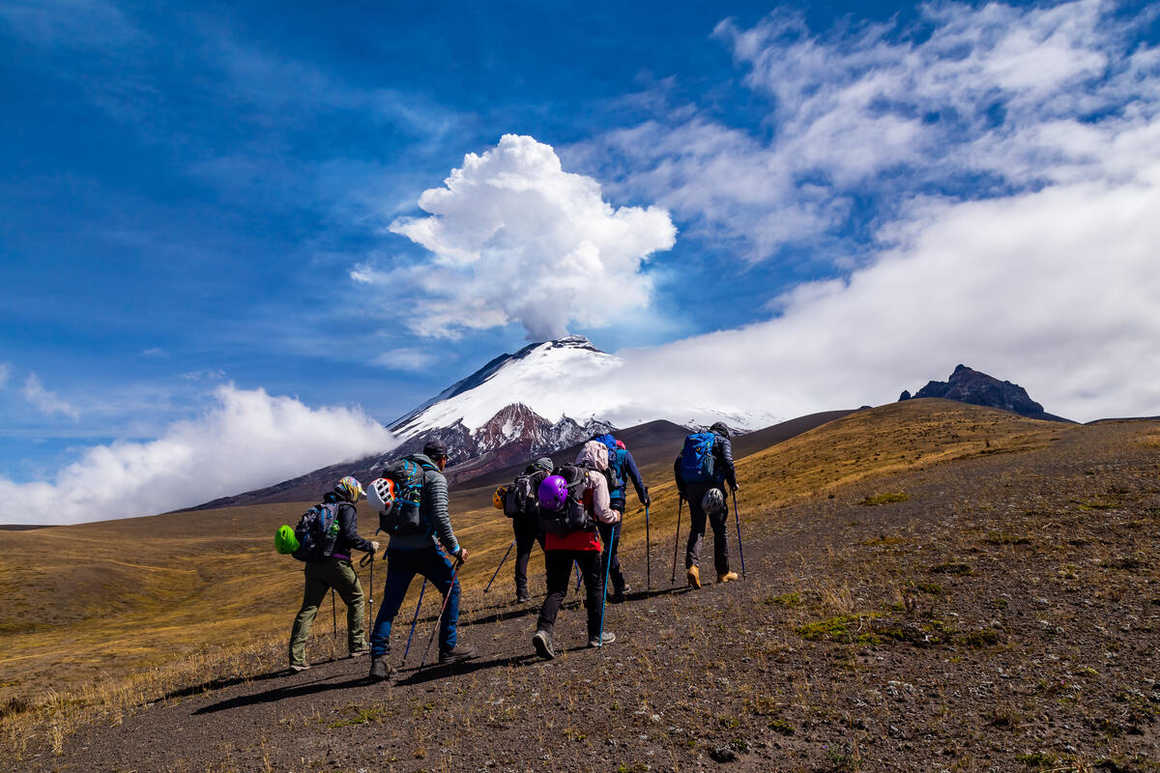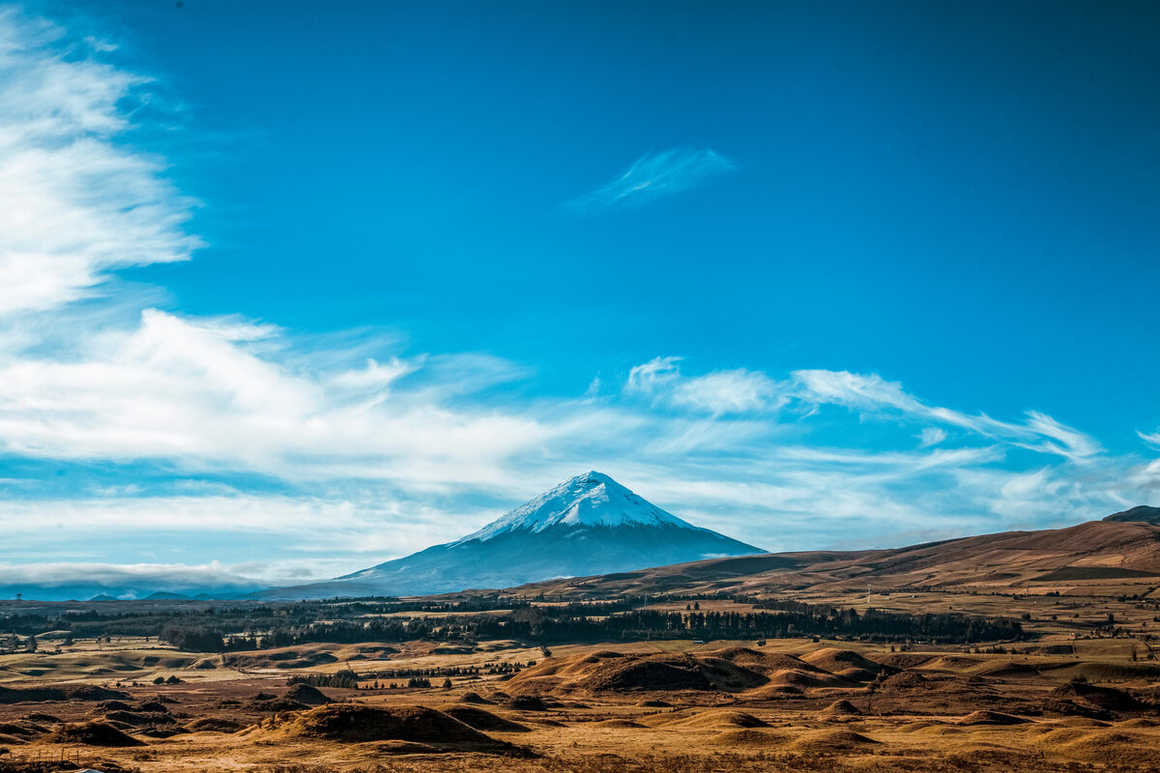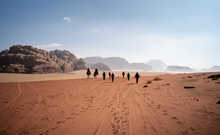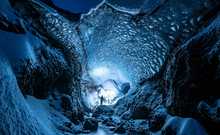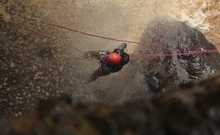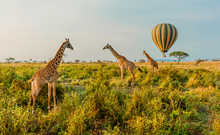The Highest Mountains in Ecuador
Ecuador is a mountainous country located on the eastern coast of South America. It shares land borders with Colombia to the north and Peru to the east and south, and also has a coastline on the Pacific Ocean to the west.
When many think of Ecuador, they often think of the Galápagos Islands, the equator and the Andes Mountain range which runs directly down the centre of the country. Lesser known are the volcanoes of Ecuador, offering endless trekking and climbing opportunities as well as some truly breathtaking scenery.
In this blog we’ll explore the 10 tallest volcanoes in Ecuador as well as some of the Ecuador volcano hikes you can embark on with Kandoo.
How many volcanoes are in Ecuador?
According to the
Global Volcanism
Program, Ecuador is home to 36 Holocene volcanoes (those that have erupted
in the last 12,000 years), 18 active since 1800 CE and 12 active since 1950 CE.
It also features in the list of top 10 countries with the most volcanoes in the
world.
What is the ‘Avenue of Volcanoes’ Ecuador?
When the Nazca and South America tectonic plates collided
100 million years ago, it formed the backbone of South America, the
Andes
Mountains. This geological collision also produced a secondary mountain
chain within Ecuador’s Andes, the Cordilleras. The result of which was dozens
of lofty volcanoes, several of which remain active today and 10 of which are
above 4,900m.
When explorer Alexander Van Humboldt visited the valley
between the two ranges at the beginning of the 19th century, now the
Panamerican highway, he coined it ‘The Avenue of Volcanoes’ because of its
concentration of high volcanic summits. The Avenue of Volcanoes is a 200-mile section
of the Andes in Ecuador from Quito to Riobamba, known for its dizzyingly high
volcanoes.
The landscapes and national parks along this central
stretch of Ecuador are some of the most spectacular in South America, offering fantastic
views of snow-capped volcanoes, lush green valleys and mountain lakes. This is
supreme hiking country, with trails leading to craters harbouring turquoise
volcanic lakes, usually with views of the biggest peaks, Chimborazo and
Cotopaxi.
10 highest volcanoes in Ecuador:
- Chimborazo – 6,310m
- Cotopaxi – 5,897m
- Cayambe – 5,790m
- Antisana – 5,753m
- Altar Volcano – 5,405m
- Illiniza – 5,248m
- Sangay – 5,188m
- Tungurahua – 5,023m
- Carihuairazo – 5,018m
- Cotacachi – 4,944m
Summiting volcanoes in Ecuador
Chimborazo
At 6,310m, Chimborazo Volcano is both the tallest mountain in Ecuador and the farthest point from the centre of the earth due to its proximity to the equator. Chimborazo has also been called King of the Ecuadorian Andes, as its size surpasses all surrounding volcanoes and mountain peaks. It is located in the central Andes, 150km south of Quito and 49km north of the city of Riobamba, anchoring the southern end of Ecuador’s Avenue of Volcanoes.
While Mount Everest (8,848m) may be the highest mountain from sea level, Chimborazo’s unique position makes it the world’s furthest point from the Earth and closest to the sun, making it an irresistible challenge for trekkers seeking an unparalleled experience. Interestingly though, Chimborazo is far from the tallest mountain in the Andes – it is the 37th highest – and it isn’t included in the 100 mountains in the world either.
Climbing Chimborazo is a tough challenge that requires endurance and stamina. Although it possesses several challenges including traversing glaciers, a multi-day ascent and the risks associated with climbing at high altitude, it’s not overly technical, with much of the ascent involving a steep trek up the mountainside. With the right
adventure travel company, sufficient training and enough time to acclimatise properly, climbing Chimborazo is achievable for experienced trekkers and adventurers.
Cotopaxi
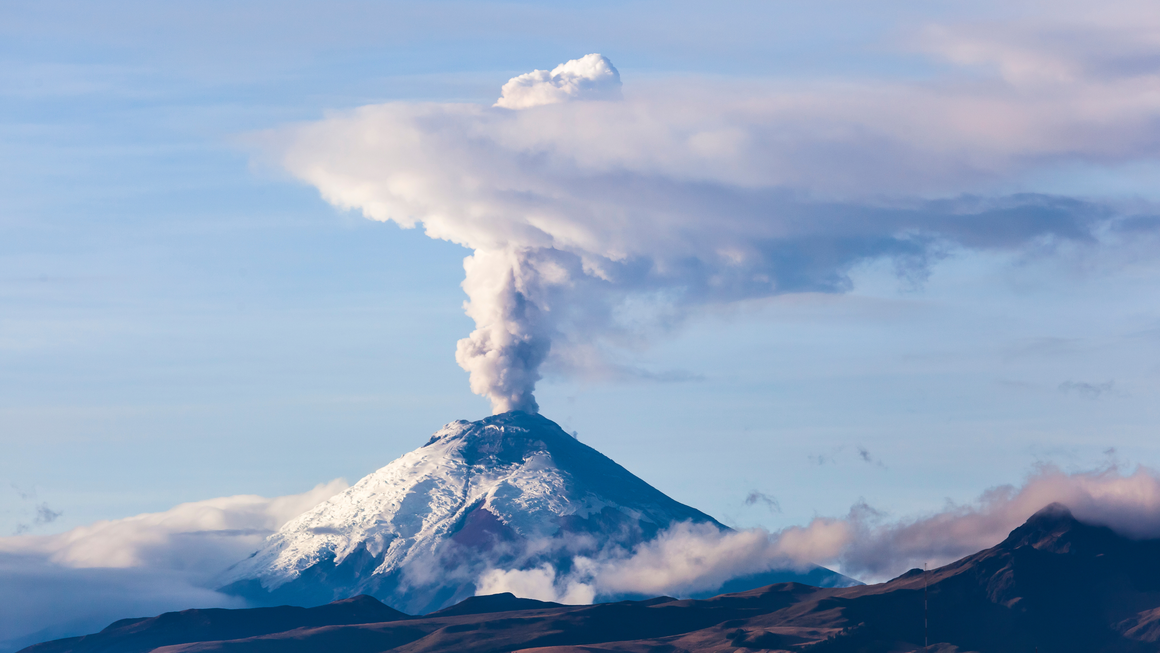
The second tallest mountain in Ecuador is Volcano Cotopaxi, which sits within Cotopaxi National Park at an elevation of 5,897m. Cotopaxi is one of the most popular volcanoes in Ecuador for trekking due to its position only 50km from Quito and it’s almost perfect conical shape which can be seen from the capital on a clear day. It is also considered one of the most active volcanoes in the world, with its most recent volcanic activity recorded between mid-2015 and early 2016.
In total, Cotopaxi National Park covers an area of almost 334sq km. The entire area is protected, and it spans 3 different provinces: Cotopaxi, Napo and Pichincha. There are a variety of activities available at the park as well as lots of wildlife that are sure to make any visit here even more interesting, but the main attraction is of course the iconic snow-capped Cotopaxi Volcano.
While it is possible to climb Cotopaxi with no technical mountaineering experience, the high altitude, crevasses and steep sections of snow and ice mean this is not a feat to be taken lightly. You’ll need to be fit, fully acclimatised and have an experienced guide with you. Kandoo have a knowledgeable in-country team of local guides to ensure that our guests and our staff are in good hands from start to finish.
Cayambe
Cayambe is the third highest mountain in Ecuador at an elevation of 5,790m above sea level. Cayambe Volcano is located some 70km northeast of Quito in the Ecuadorian Andes. It’s the only major mountain in the world whose summit is crossed directly by the equator, and it has a permanent glacier and is snow-capped year-round.
Cayambe Volcano was, at one point, composed of a 22-square kilometre ice cap glacier reaching down as far as 4,200 metres. As of now, this ice cap glacier can be found at 4,600 metres. Unfortunately, due to global warming, over 40% of this mountain’s ice cap has disappeared in the last 30 years and Ecuadorian glaciologists estimate that by 2030 all Cayambe’s glaciers will have disappeared below 5,000 metres.
To climb Cayambe, you should be in good shape, with the mental strength to endure the complexities and complications of a high-altitude trek. While it is not a particularly technical ascent, the obstacles and hazards along your climb make it a challenging volcano to summit. Most of the volcano is within the Cayambe Coca Ecological Reserve, which means it has more than enough fascinating flora and fauna to enrich your hiking trip.
When is the best time to visit Ecuador’s volcanoes?
Ecuador is a year-round travel destination thanks to its proximity to the equator and has two primary seasons – the rainy season from October to May and the dry season from June to September. That said, its weather is best defined by region and the best time to visit Ecuador often depends on what activities you’d like to take part in.
In the Andes, days can be hot and sunny all year, with bitterly cold nights and temperatures dropping as the altitude increases. The best time of year to visit the Ecuadorian Andes to explore the country’s epic volcanic landscapes is generally between November to February and June to August. Kandoo run group trips to Ecuador during these periods, when precipitation is at its lowest and there is the greatest chance of cloud free summits.
Trek in Ecuador with Kandoo Adventures
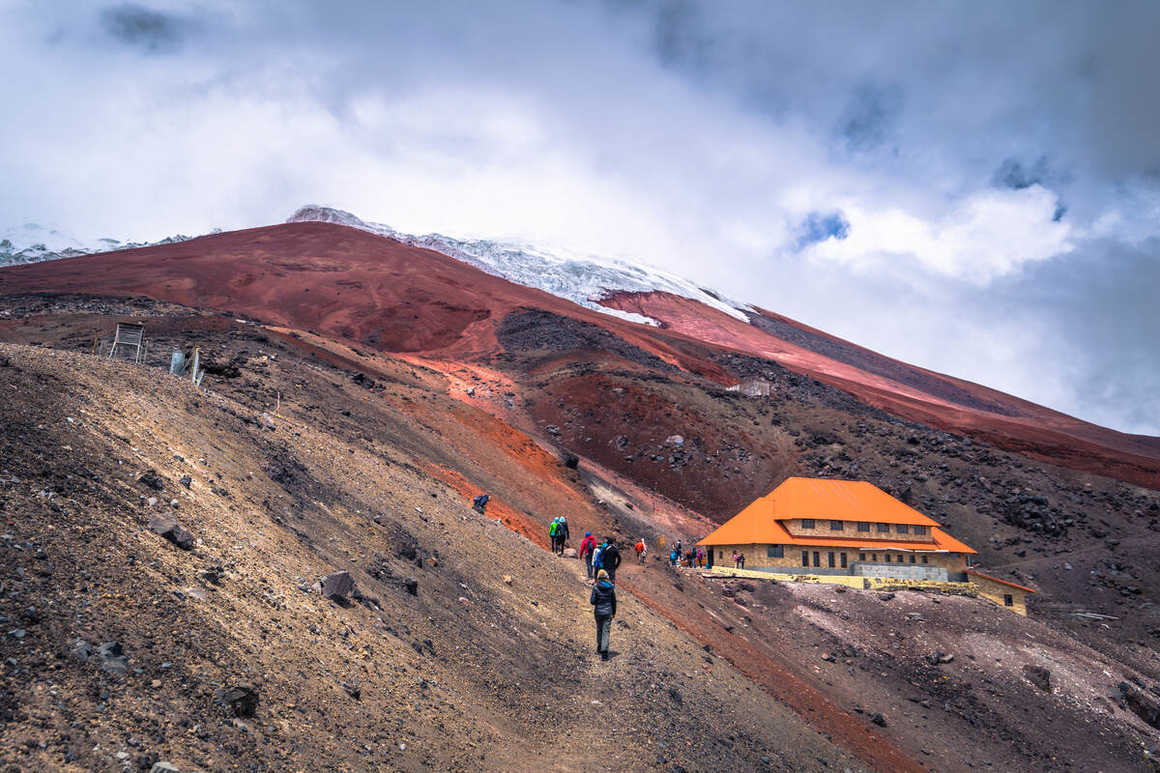
Ecuador’s landscape of volcanoes and snowcapped peaks, cloud forests, ancient ruins and high grassland paramos make it the perfect backdrop for a wild and remote hiking adventure. Kandoo now offer epic adventure travel experiences in Ecuador, from hiking volcanoes to exploring the Amazon jungle.
Our
Ecuador Volcanic Adventures trip takes trekkers through the volcanic highlights of the rugged Ecuadorian landscape. We journey from the deep blue hues of the Quilotoa Crater, to the rust coloured, lower slopes of Chimborazo, embracing the vibrant sights and sounds of Baños and pushing hard to Cotopaxi's icy crater. You will be hiking for multiple consecutive days and taking in significant ascents, so you should be in the best physical condition possible before departure.
Our
Peaks of Ecuador trip is one of the hardest challenges we offer, summiting Ecuador’s 3 highest volcanoes: Chimborazo, Cayambe and Cotopaxi. To prepare for this trip we would recommend gaining some experience using ice axes and crampons. We would also recommend spending lots of time out in the mountains on uneven terrain. You will be hiking for multiple consecutive days and taking in over 1,000m ascent in a day, so it is important that your body is prepared for this.
With the right training, a positive attitude and a can-do mentality, we believe summiting the highest mountains in Ecuador is totally achievable, especially with the support of our fantastic team of guides. For an experience like no other, exploring the most remarkable volcanoes of Ecuador, check out our Ecuador trips or get in touch with our helpful team to discuss our trips to Ecuador today.
